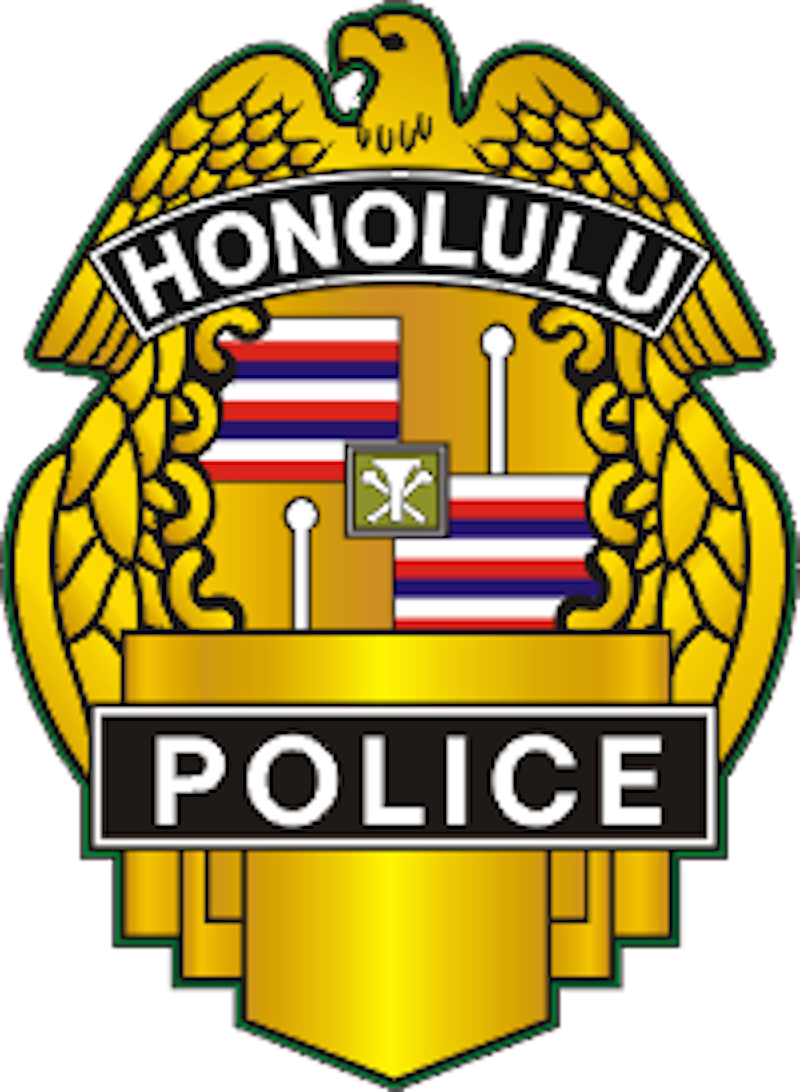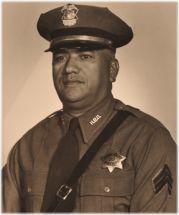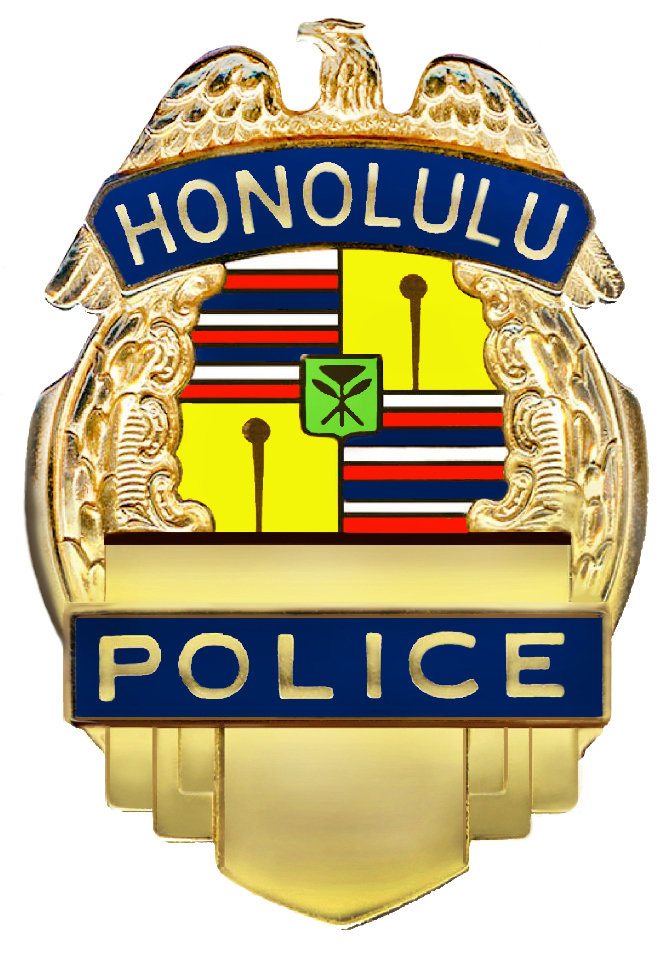The Honolulu Police Badge
Prior to 1952, Detective Alfred Karratti (deceased) was primarily responsible for designing and obtaining approval for the current beautiful badge worn proudly by officers of the Honolulu Police Department.
The badge of the Honolulu Police Department is unique, for its design embodies traditions and ideals influenced by the historical evolution of police in Hawaii, spanning a period of time beginning with the monarchy, through annexation of the Islands as a Territory of the United States of America and eventual Statehood. The one consistent emblem of Police authority through all periods of Hawaiian History is the Pulo’ulo’u (The Kapu Stick).
The shield design traditionally used by law enforcement agencies is a symbol of authority and is representative of the official emblem of the United States. The eagle as construed in this sense is also symbolic of offering protection for the people and their rights as guaranteed under the Constitution and the Bill of Rights of the United States of America.
The incorporation of a portion of the original Royal Hawaiian Coat of Arms, as issued in 1843 by Kamehameha III, makes the design an amalgamation of Polynesian and Anglo/American cultures and philosophy. This basic design with slight modification is also part of the present State Seal.
Centered on the shield is a quartered heraldic device. The first and fourth quarters each have the eight stripes of the Hawaiian Flag, red, white, and blue alternating. The eight alternating stripes of the Hawaiian flag are believed to represent the eight largest islands of the archipelago. In 1794, British Naval Captain George Vancouver presented Kamehameha with a “Union Jack” (Flag of the British Empire), probably with the intent of exercising British sovereignty over these islands. This coupled with the red and white stripes of the American banner comprised the flag of Hawaii still in use today.
The second and third quarters are a yellow field with a ball pierced on a staff representing the Kapu Stick (Pulo’ulo’u), which was the emblem of authority and protection.
In ancient times, the Pulo’ulo’u was placed at the gateway or door of the Ali’i’s home or other possessions, at sacred sites, and cities of refuge to which a person seeking safety might flee. The Kapu stick also signified prohibition and was the ultimate symbol of authority to the ancients. It was the Pulo’ulo’u that King Kauikeaouli (Kamehameha III) awarded to the first constables as a symbol of his royal authority in their office. It has remained the primary symbol of police authority this past century and a half.
In the heart of the badge are two crossed paddles and a triangular flag on a green field. The paddles symbolize the Law of the Splintered Paddle or “Mamala Hoe Kanawai”, which was decreed by Kamehameha I, circa 1782, to protect travelers from wanton attack. The triangular flag, or Puwalu, represents a flag raised at sea above the sail of the chief’s canoe.
Finally, the embellishments that border the side of the badge design represent taro, fern, and banana foliage. These reflect the fruitfulness of the soil and the tropical paradise of the islands.
Today silver badges are worn by Patrol Officers and Corporals, and the gold badges by Sergeants and those of higher ranks. The badge may not be copied or reproduced without the expressed consent of the Chief of Police.


